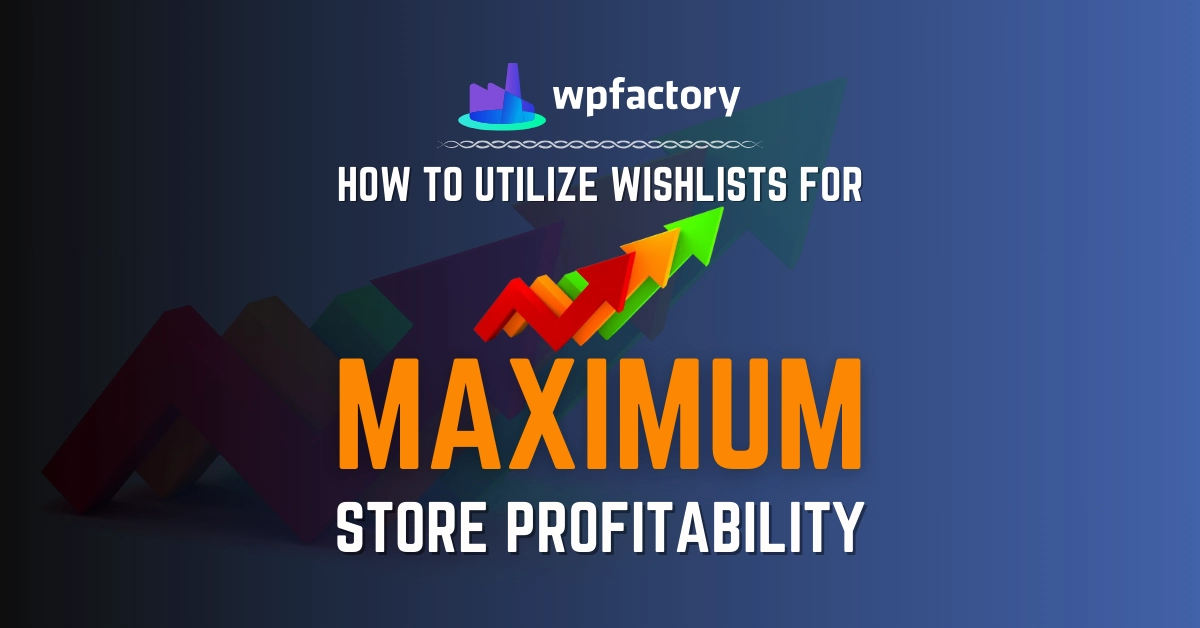
How to Utilize Wishlists for Maximum Store Profitability
Increased conversion and profitability are the main motivations behind every step you make in your eCommerce store, so how can wishlists help in the conversion process of visitors into customers?
There are many ways wishlists can be utilized to increase a store’s profitability, it’s an essential tool that you need to offer to your customers that won’t cost you much effort or money.
It’s one of the easy-to-configure yet truly valuable features to have in your store.
In this article, we’ll discuss everything you need to know about utilizing wishlists for maximum store profitability.
This article assumes you’ve already installed the wishlist plugin and now you’re trying to make use of it.
Generally speaking, wishlists could be used to benefit you as a store owner, and it could also benefit your customers and make their lives easier which will ultimately benefit you as a store owner by increasing customer loyalty.
How Wishlists Can Benefit the Customer?

Wishlists have many benefits they can offer to the customer, from the moment of the creation of the wishlist until the purchase, many things could be done to benefit the customer.
You can encourage users to create wishlists by offering discounts and free shipping to wishlist items, this way users will have the incentive to add items to their wishlists so they will add more and more items to it.

You could use gamification elements on your wishlists to entice the sense of competition in your store and users are encouraged to add products to your store to win competitions and unlock prizes. This would be a fun way to encourage sales in your store.
Sharing is another amazing way to encourage users to use their wishlists, by sharing the wishlist to their friends through social media or email you’re gaining more exposure to your store and encouraging the customers to market your store for you for free.

How Wishlists Can Benefit the Store Owner?
Leverage Wishlist Data
Data is the oil of personalized and targeted marketing campaigns. In the information age customers are overwhelmed with information and will only listen to what speaks to them, and you can only do this with data, and wishlists are a great source of data.
Analyzing wishlist data can help you gain insights about popular products and trends.

By Analyzing which items are most frequently added to wishlists you can uncover popular products and emerging trends. Then you can use this data to inform inventory decisions, product development, and marketing campaigns. And of course, it will be easy for you to spot potential bestsellers and stock accordingly to avoid missed sales opportunities.
You can also personalize recommendations of products for customers using wishlist data. And suggest similar items, complementary products, or items that frequently appear together on wishlists.
Your marketing campaigns can be tailored using wishlist data to be targeted and customized to your target audience. You can send personalized email campaigns or push notifications to customers who have added specific items to their wishlists, Offer discounts, and limited-time offers, or remind them of items they’ve saved, and segment your audience based on wishlist behavior to create highly targeted campaigns with a greater chance of conversion.
You could also track wishlist fulfillment as you can monitor which items are being purchased from wishlists and which are lingering, then use this data to identify potential barriers to purchase and make adjustments to pricing, product descriptions, or promotions, And track the effectiveness of marketing campaigns that target wishlist shoppers.
A lot can be done with wishlists, it’s a great source of data that can be analyzed to gain more insights about your target audience and their desires.
Analyzing wishlist data is one great way to utilize your wishlist for maximum store profitability.
Wishlist Upselling and Cross-selling
Wishlists, often seen as passive browsing tools, can actually be powerful drivers of sales through strategic upselling and cross-selling. Here’s how:
- Uncover hidden opportunities: Analyze wishlist data to identify frequently added items and complementary products that aren’t on the list. This reveals potential upsell and cross-sell opportunities based on customer desires.
- Personalize recommendations: Instead of generic promotions, use wishlist data to suggest individual customers with items that complement their existing selections. This targeted approach is more likely to resonate and lead to conversions.
- Create dynamic bundles: Offer curated bundles of wishlist items and their perfect complements, presented as complete sets or “finishing touches.” This increases the average order value and provides a more satisfying shopping experience.
- Trigger-targeted flash sales: When someone leaves an item on their wishlist for a while, send them a limited-time discount or flash sale offer exclusively for that item. This creates a sense of urgency and encourages purchase before the deal disappears.
- “Complete the look” inspiration: Showcase outfits, decor sets, or other curated collections featuring wishlist items alongside complementary pieces. This visually inspires customers to expand their purchases and embrace a complete aesthetic.
By strategically utilizing wishlists for upselling and cross-selling, you can increase your average order value, improve customer satisfaction, and ultimately boost your bottom line. Remember, the key is to personalize recommendations, offer valuable bundles, and create a sense of urgency without being pushy.
Summary
Wishlists can really be a powerful tool, if used correctly they can be a great asset for your store’s profitability as they can be used to collect data, engage customers with gamification techniques, and increase sales with upsells and cross-sell offers.
Make sure to use them properly, and they will bring you wonders.


